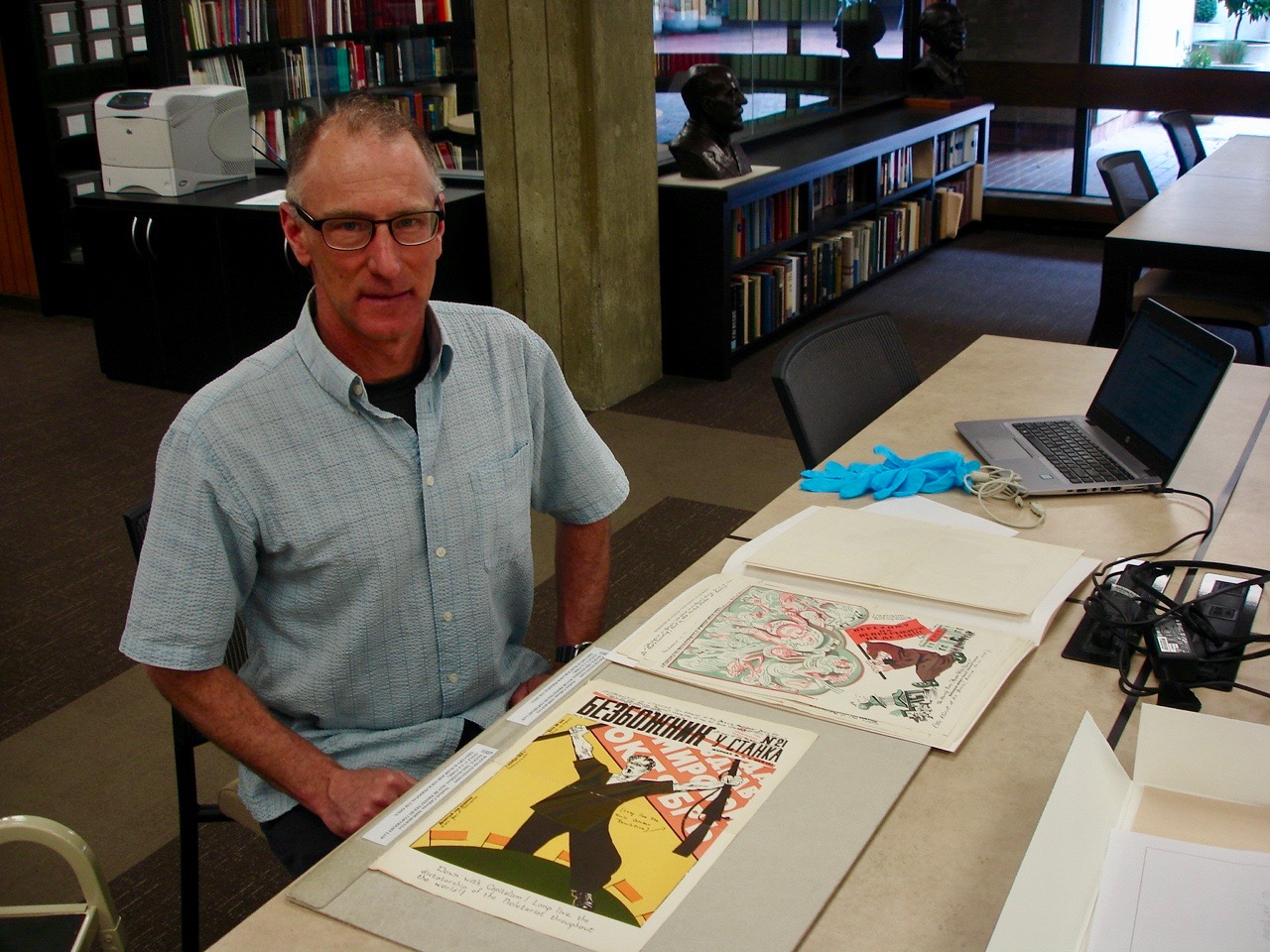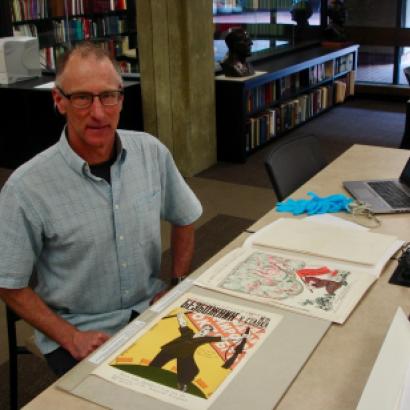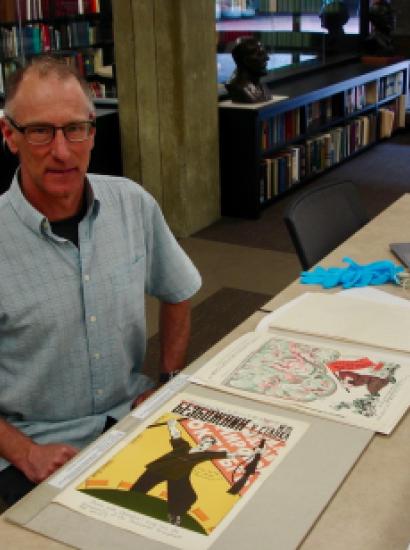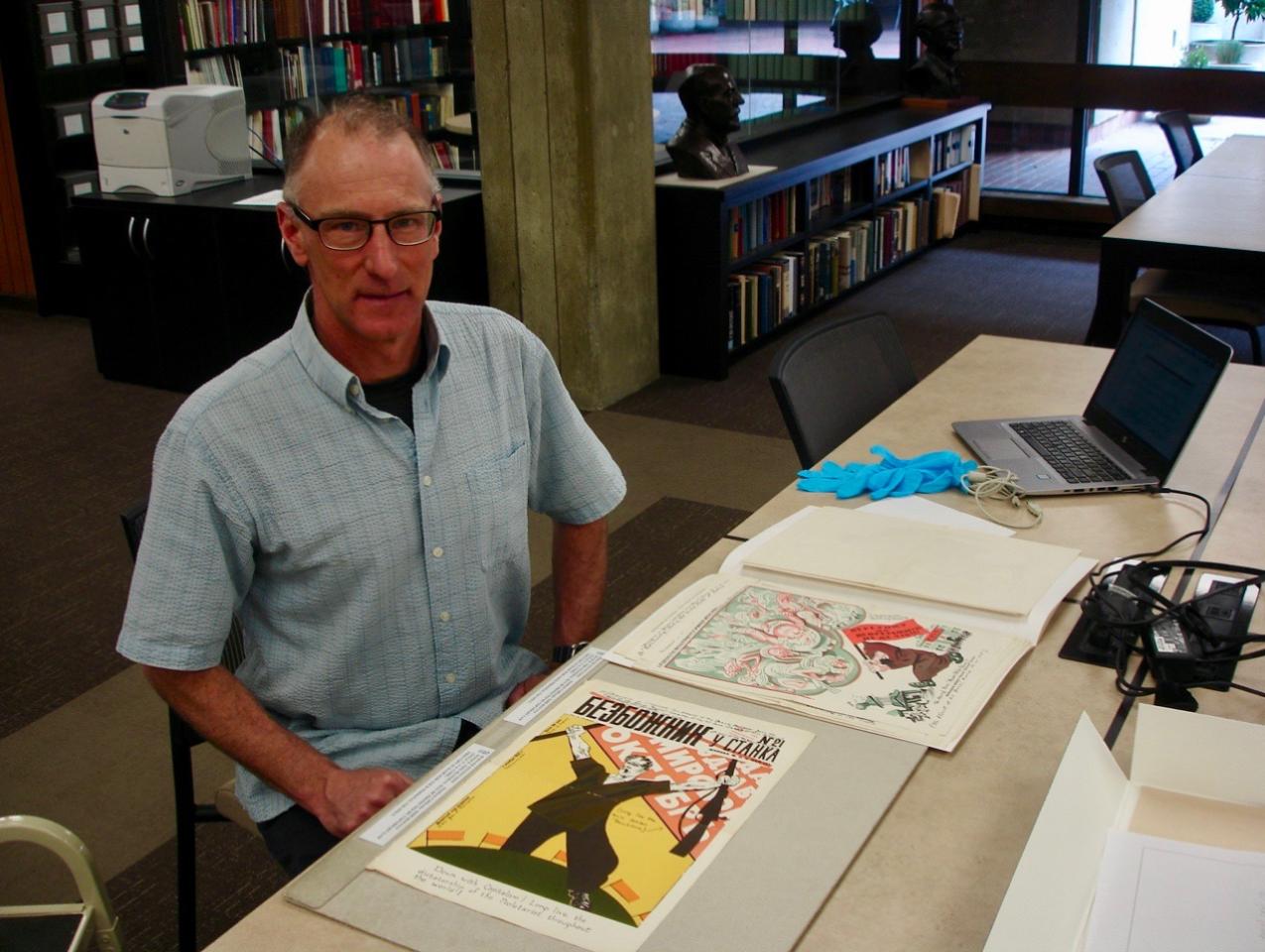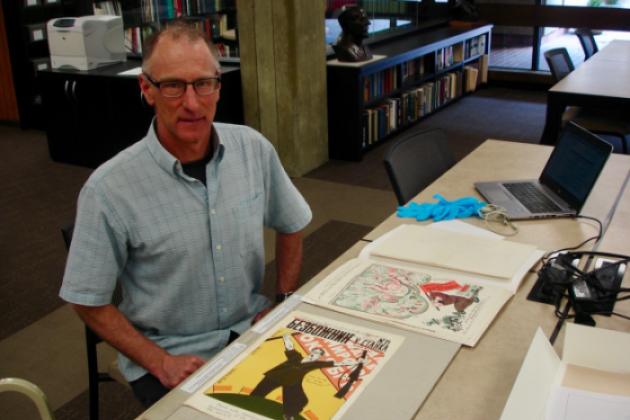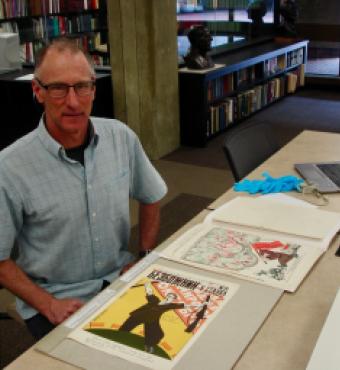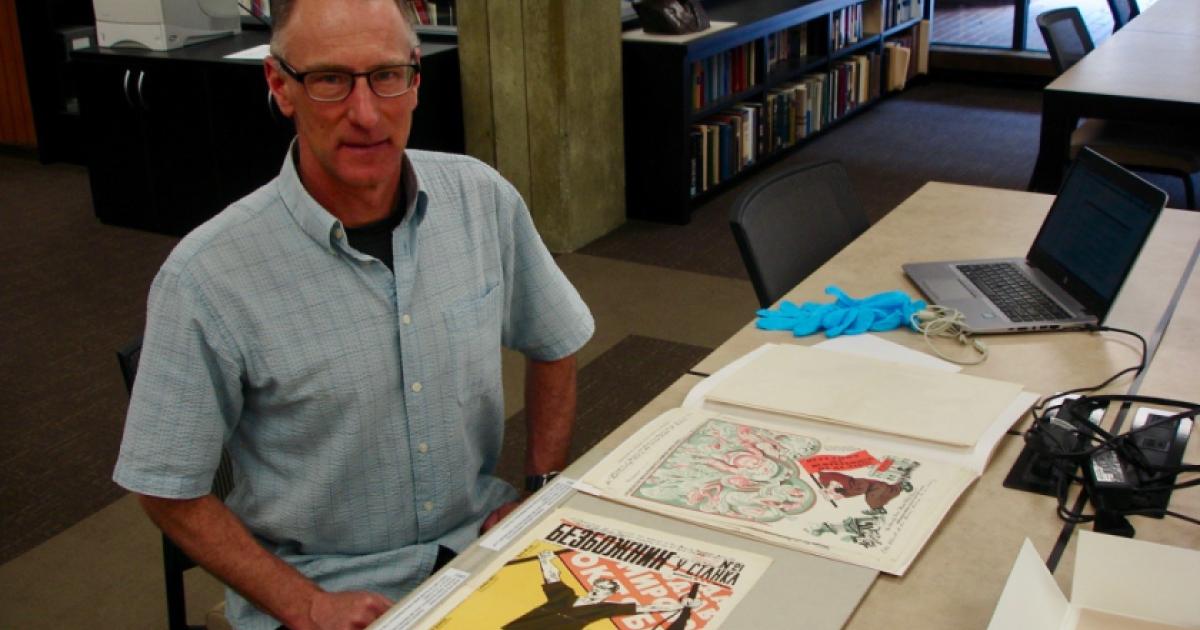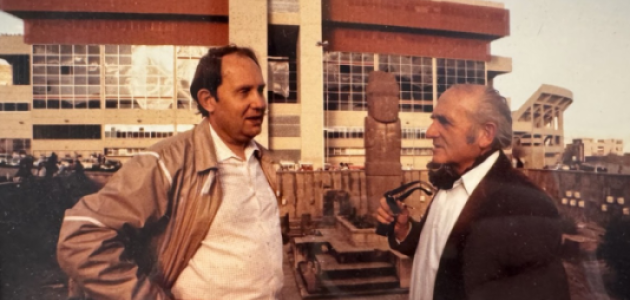By Kevin M. Kain, Ph.D. University of Wisconsin-Green Bay
The research I conducted thanks to a Hoover Institution Library and Archives Research Scholar Grant explored materials related to the formulation, display, and reception of Soviet anti-religious visual propaganda in the 1920s and 1930s. In addition to considering the aesthetics and content of visual propaganda, the project documents the specific contexts in which images appeared as well as the prescribed and actual responses they generated. Study of the theory and practice of presenting anti-religious propaganda explains why and how visual imagery was deployed in print, the “godless corners” constructed in clubs, schools, barracks, collective farms and factories, as well as formal anti-religious museums. The research offers glimpses into the lived experience of viewers, which reflected and shaped ideas about religion in a transformative period of war, revolution, industrialization, and collectivization. My ultimate goal is a digital heritage project that recreates historic displays of visual propaganda documented in photographs and verbal records.
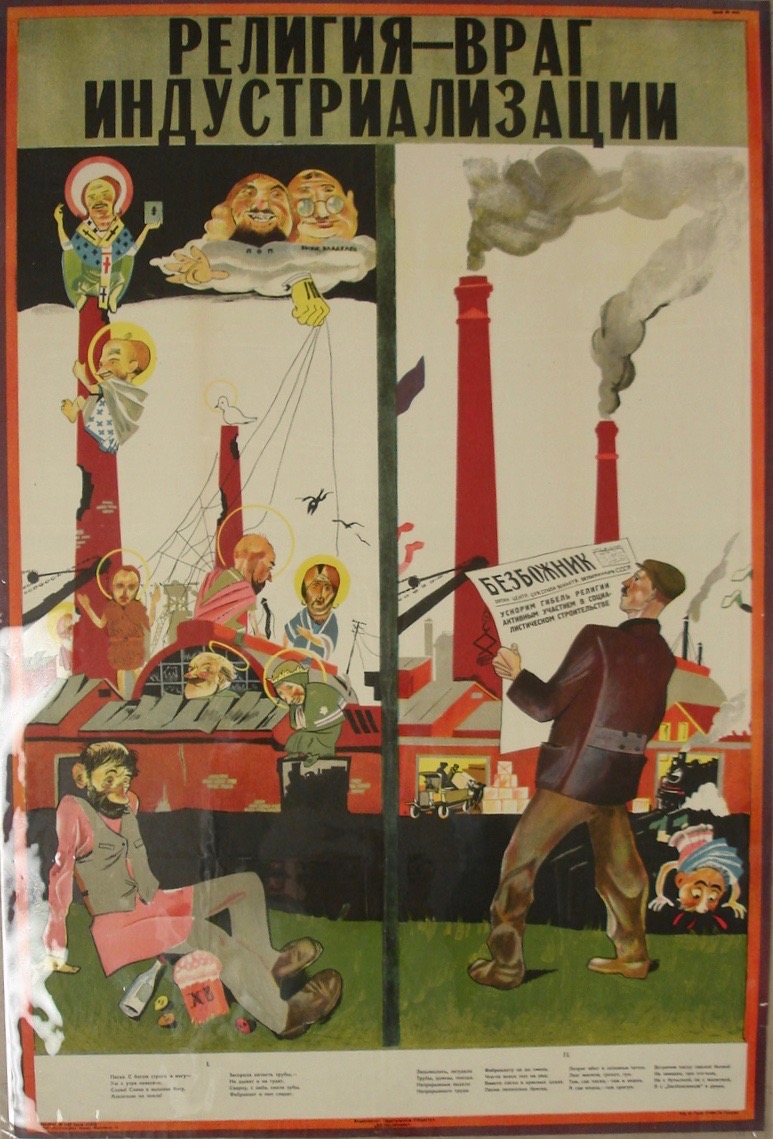
Work in Hoover collections allowed me to assess a broad spectrum of early Soviet visual anti-religious propaganda programs. Research in the Archive, poster collection, Tower Library, including the Art Vault and “Russian Miscellaneous” collection, involved visual images and the documents necessary for their analysis. I examined and made digital images of hundreds of visual images, such as posters, illustrated journals, post cards, and photographs. My findings highlight the crucial roles that illustrated anti-religious periodicals, especially Bezbozhnik, Bezbozhnik u Stanka, and Drevenskii Bezbozhnik (all held in the Tower Library), played in the propaganda. The periodicals popularized and taught viewers how to “read” the visual images they featured, many of which also appeared as posters. The journals offered news about, audience responses to, and photographs of exemplary displays of atheistic imagery. Advertisements, subscription premiums, and prizes document the dissemination of individual posters and collections of specifically themed images intended to be presented together. These materials make it possible to track “the life of the image” from its appearance in journals, issue as poster, advertisement, display, and reception, establishing clear lines of provenance. They likewise reveal the development of a cannon of “classic” images by artists such as Dmitri Moore, which were repeatedly reproduced in various formats and contexts for more than a decade. In addition to assessing the new Soviet imagery, the investigation shows that atheist ideologues co-opted and re-purposed art from the Imperial period, especially nineteenth-century Russian Realist painting, as antireligious propaganda.
The Hoover archival collections, including Ethan Theodore Colton papers, Hugh Moran papers, and Antoni W. Kwiatkowski papers, offer alternative perspectives on the Soviet atheistic propaganda supplied by foreigner observers. They comprise commentaries on displays of visual propaganda viewed in the Soviet state as well as images, especially posters, obtained there. The papers likewise shed light on the impacts of atheistic discourses beyond the Soviet sphere, including the consumption and display of anti-religious propaganda in the US. The archival records show that American scholars, journalists, and others regularly based their assessments of religion and anti-religious policies in the Soviet Union on analysis of the imagery and articles published in anti-religious journals, including Bezbozhnik and Bezbozhnik u Stanka. The issues of Bezbozhnik u Stanka from 1923 featuring subsequently affixed typewritten English translations illustrate the practice.
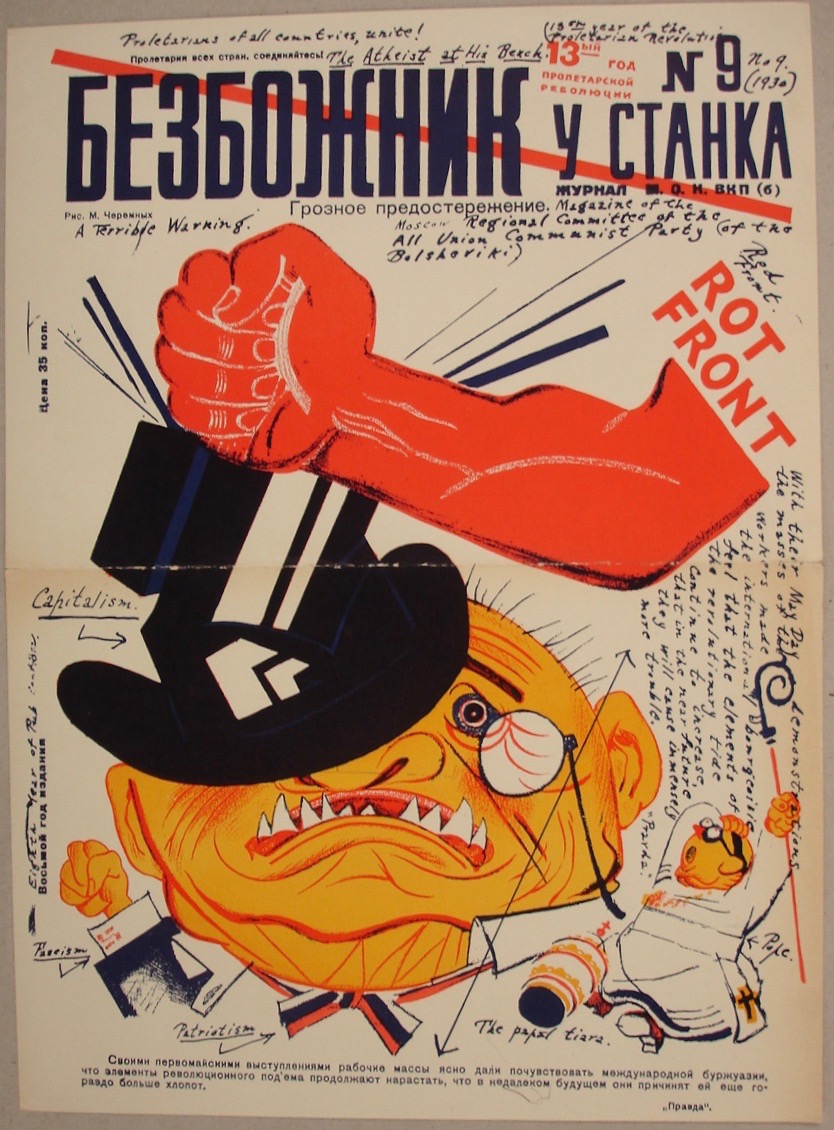
The Colton papers proved exceptionally valuable as they provide materials for the reconstruction of exhibit on the Soviet Union presumably created for display in the US in early 1930s. The show presented a curious array of visual images, ranging from a lithograph image of Lenin’s tomb to photographs documenting changes in living conditions of Soviet students (probably resulting from the YMCA student relief efforts which Colton guided). However, the central focus was a series of nine anti-religious propaganda posters, the prototypes of which I located in the 1930 issues of Bezbozhnik u Stanka. These extremely rare posters reproduced the Russian language originals with English translations. In addition to translations of the Russian, the English texts decoded and explained verbally the meanings of symbols and stereotypes pictured in the imagery making them even more explicit than the originals for the untrained foreign eye. Yet, this display of the Soviet imagery in the US was complicated by the accompanying juxtaposition of potentially positive associations provided by an illustrated booklet Soviet Pictorial. Forging Ahead, published by Friends of the Soviet Union (featuring photographs of Soviet industry, agriculture, etc. and the sale and display of propaganda posters in Russia), and negative connection supplied by a large poster charting the threat of “Bolshevik Organizations in the United States of America at the Present Time, 1931,” issued by the American Vigilance Intelligence Federation. This totally unexpected employment of the anti-religious imagery reveals a new layer of its significance, which begs for further investigation.
I would be amiss not to mention the discovery of Herbert Hoover’s caricature in the Soviet anti-religious propaganda. Featured in Bezbozhnik u Stanka No. 17 (1931), the highly irreverent image depicts the head of the American Relief Administration as “Savior Hoover” (“Spasitel’ Guver”). The Hoover figure is pictured in a style suggesting Orthodox iconography, with a nimbus and American flag for a tunic. His descending from a hill, is a clear reference to the New Testament’s “Sermon on the Mount” (MT 5-7). While blessed by the Pope and paid homage by “western” capitalists and politicians, Hoover is symbolically blocked from the Soviet Union by walls of the Moscow Kremlin. It is indeed ironic that the collection that Hoover founded ultimately “saved” such materials from the dustbin of history, making them available to researchers nearly a century later.
It is indeed ironic that the collection that Hoover founded ultimately “saved” such materials from the dustbin of history, making them available to researchers nearly a century later.

I would like to express my sincere gratitude for the award of a Hoover Institution Library and Archives Research Scholar Grant, which made my research possible. I also thank all of the archivists and librarians who helped make my work both productive and pleasant. Their combined efforts allowed me to work simultaneously in the library and archive, ensuring the maximum utilization of my time. Michael Herrick and Paul Thomas merit special recognition. I am above all indebted to Hoover Visiting Fellow Edward Kasinec for sharing his expertise in the Institution’s collections and for his attention to the success of my efforts.
To view more images mentioned in this article click here.




